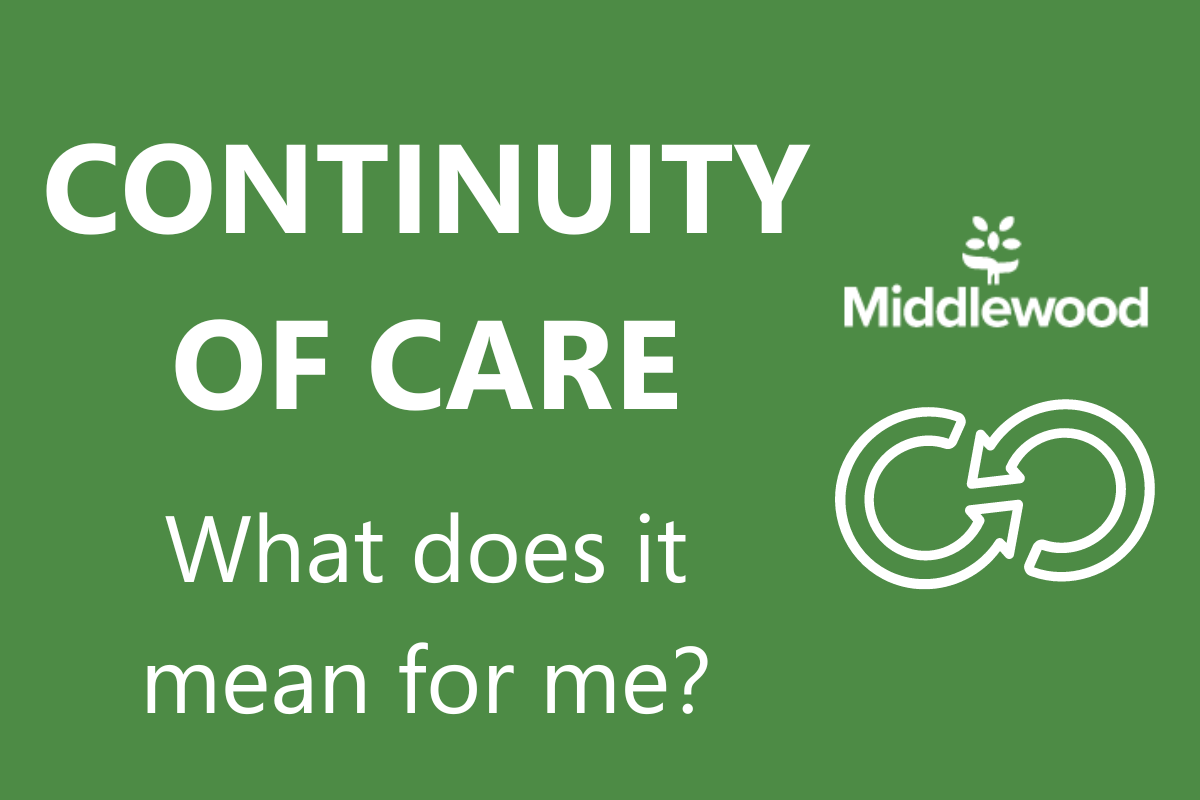Continuity Of Care

Continuity of Care – what does it mean for you?
We know that our doctors and patients value seeing the same regular clinician as often as possible, this is often referred to as ‘continuity of care’. Clinicians are able to gain improved insight into the patient’s health, and the patient gets to know their regular clinician which helps build a trusted relationship. Everyone benefits. But in recent years, continuity of care has been eroded. The 21st century culture of immediacy and the political pressure to prioritise rapid access to GP appointments, have all made offering continuity harder to achieve. If speed of access to care is the main focus, then which clinician you see becomes less important. If you combine all of that with the challenges of the pandemic, providing continuity seemed to become more and more difficult until hopefully now…
At Middlewood, we are enhancing the relationship-based healthcare for all our registered patients, whilst still maintaining, the often overlooked, benefits of a large, modern primary care provider. This important project has been months in the planning and has recently come into operation, despite the choppy waters of the busiest December in the history of General Practice! Please find below information that will help you understand a bit more about the process:
What will continuity look like for me and my family?
Where it is clinically appropriate, we are working towards patients seeing the same clinician for all ongoing care. Wherever possible, this is likely to be a GP that you have a relationship with or who you have seen most frequently over the years.
When you request an appointment (either on the telephone, in person or online), the first option will be for us to make you an appointment with your usual GP. This is what our reception teams will now be doing. Sometimes this may mean you have to wait a few days or a bit longer, but evidence tells us for ‘non-urgent’, ongoing health issues, it is better for you to see a clinician who knows your ‘story’.
There may be occasions when you may need ‘urgent’ help from your usual clinician and there are on the day appointments available for these circumstances. If your usual clinician is not available that day, or already ‘full’, the receptionists, assisted by the on-call GP, will identify the most appropriate course of action.
Also, there is still scope for you to see a clinician other than your usual GP, when more specialist knowledge or skills are required, for example, around diabetes, respiratory care or women or men’s health.
How PATCHS will help us provide continuity
PATCHS, the new online consultation system, is one way of helping us provide continuity. AskmyGP, our previous system, allowed an easy way to request help – this had an understandable consequence of huge amounts of requests every day. These ranged from minor ailments to severe, sometimes life-threatening emergencies. The concern was always that the more serious problems became buried within the more routine. One of the unintended consequences of this was that often the ‘any appointment with any clinician’ approach became more common. We just wanted to make sure our patients were seen.
PATCHS is an online portal that technically works in a similar way to AskmyGP. However, we are managing the volume and type of requests that come in via PATCHS differently. This will enable us to assign online queries to the most appropriate clinician more effectively.
What else we’re doing to help
We recognise there has been some frustrations over telephoning the Surgery and we are seeking to improve the situation. We now have a telephone system that allows us to track each call, how long the caller has waited and how many times they have called. The system tells our team how long callers have been waiting so that we can proactively better manage call waits. We can see that the average wait is around 3 minutes for people contacting the surgery. However there are busier times and during these times the wait can be much longer. If you are waiting longer than you might expect, and your call is not urgent, then please try to call back at a quieter time. Currently our data shows that a Monday is the busiest day for telephone calls and the busiest time daily is 10.30-11.30
We are always looking to improve and having access to the information about telephone calls will allow us to look at trends in demand which will help us to ensure appropriate staffing levels and capacity across the system to help us meet the demand.
What can you do to help?
Thank you to everyone for your patience. The following things are the most important things you can do to helps us in the coming month:
- Please be kind to our staff, they are doing their best often under very difficult circumstances.
- Please bear in mind that you may need to wait longer to see your regular clinician for non-urgent issues.
- Please make use of all the features on the NHS App – it is better than you might think!
And Finally…
Thank you to those of you who have and continue to show us so much support. We appreciate that the vast majority of you know that we do try our best every day in exceptionally challenging circumstances. We hope this blog helps to share why we have changed and what we are striving to achieve.
